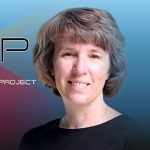Gopal Hegde
Vice President and General Manager
Data Center Processor Group, Cavium/Marvell

Gopal Hedge leads Marvell’s Server Processor Business Unit and is responsible for full P&L of ThunderX Armv8 based serve SoCs targeting Cloud Compute and High Performance Computing markets. Gopal has over 27 years of experience leading startup and established businesses. He joined Marvell through Marvell’s acquisition of Cavium, where he established the server processor business unit, established strategy roadmap, built the team and business from ground up, drove development, delivery and successful launch of two generations of true Xeon class Arm server processors and established a broad ecosystem of partners for the product line. Under his leadership, ThunderX became world’s most widely deployed and most widely supported Arm server processor. Gopal joined Cavium from Calxeda, an Arm server processor pioneer, where he was the Chief Operating Officer. At Calxeda, he delivered two generations of Arm server processors and established go to market through ODMs.
Prior to Calxeda, Gopal was part of management team for Cisco’s highly successful Unified Computing Server (UCS) product line. He was an early member of UCS development team and drove all of UCS platform engineering delivering three generations of UCS platforms that helped grow UCS product line to a multibillion-dollar business for Cisco. Prior to Cisco, Gopal led architecture and planning for server platform networking, storage and chipset products at Intel. His team drove major initiatives such as integration of PCIe into Xeon, drove definition, implementation and IEEE standardization of converged and enhanced Ethernet (CEE), development and standardization of Fiber Channel over Ethernet (FCoE) and PCIe SR-IOV and delivery of these capabilities in Intel’s NIC, storage and chipset products. He joined Intel through Intel’s acquisition of Level One. Prior to Level One Communications, Gopal held management positions in multiple startups including MiLAN technology (acquired by Digi International) and Acclaim communications (acquired by Level One).
HPCwire: Hi Gopal, this was a break-out year for Marvell ThunderX Arm processors in HPC – numerous systems partners, several large deployments, and the arrival of petascale Arm. To what do you attribute this success?
Gopal Hegde: Our success is attributable to FOUR main elements: (1) Customers (2) Team (3) Product and (4) Partners. Let me elaborate.
Leading HPC customers recognize that Arm server architecture can drive major architectural innovations for their workloads and are tremendously interested in our products and are closely collaborating with us on our roadmap.
Our team has done an outstanding job architecting and delivering to production, world’s 1st Xeon class Arm server processor. In addition, our team in partnership with Arm, drove open source enablement of Arm server processors including OS distro/tool chain support and compiler / library optimizations. We have contributed large number of ThunderX platforms and enabled ThunderX in the Cloud to ensure broad availability of platforms for third party software development.
Our product is highly differentiated and delivers demonstrable TCO benefits for HPC workloads and our roadmap is compelling to HPC customers.
We have closely collaborated with broad set of partners including leading HPC server OEMs (e.g.:HPE, Cray and Atos), leading HPC IHVs (e.g. Mellanox), leading HPC OS providers (e.g. RedHat, SuSE, Canonical…), leading HPC ISVs, leading HPC Cloud providers and various HPC tool and library vendors to enable our customers to seamlessly deploy ThunderX based platforms for their production workloads.
HPCwire: What is the focus at Cavium/Marvell in 2019 when it comes to server chips? How does the acquisition of Cavium by Marvell factor in?
With ThunderX2, we have demonstrated that Arm based servers can be deployed for production workloads at scale into market segments that benefit from an optimized SOC architecture. We have also established a broad ecosystem that makes this seamless for our customers. We are now building on that experience with a very compelling roadmap that will further highlight our team’s ability to innovate and execute advanced processor designs that drive key application performance advantages for HPC applications. We continue to partner with Arm to bring advanced Arm technology to market while also working with key industry partners and customers to accelerate delivery of our products and. Our recent announcement with Los Alamos National Laboratory is an example of such partnership. The acquisition of Cavium by Marvell, which closed in July of 2018, has been outstanding for our server team. We are now part of a larger organization where we can leverage greater internal resources while also benefiting from a more significant field organization and established market presence in related and adjacent markets.
HPCwire: How do you take the inroads made (with ThunderX/ThunderX2) in HPC and transfer that to broader enterprise market traction?
The EDA market is an excellent example of how we are expanding the overall momentum of ThunderX2. We have been partnering closely with Cadence and HPE in the enablement and optimization of the Cadence EDA verification and tools suite on ThunderX2 and have jointly developed white papers, performance analysis and reference configurations. These tools can leverage the scalability and efficiency of ThunderX2 for improved time to solution and overall TCO in one of the largest HPC commercial segments. We have similar activities in the CAE and Seismic markets. Beyond these enterprise markets, we are closely partnering with Microsoft on ThunderX2 platforms for Azure, as they have publicly disclosed in previous Open Compute industry events.
HPCwire: What trends and/or technologies in high-performance computing do you see as particularly relevant across the next five years?
Key trends/technologies that are relevant to HPC include emergence of DL/ML workloads, availability of high bandwidth memory and interconnect performance improvements. Arm architecture with no x86 legacy is an excellent starting point to innovate around and deliver optimized processors for HPC. One area that our customers are very excited about is the Scalable Vector Extensions (SVE) for Armv8-A that Arm has been driving. This will deliver significant extensions for vector processing beyond the existing Arm NEON technology in today’s processors. We have been working closely with the Arm team on SVE and expect this to be a major boost to further expanding the impact of Arm servers in HPC.
HPCwire: Outside of the professional sphere, what can you tell us about yourself – personal life, family, background, hobbies, etc.? Is there anything about you your colleagues might be surprised to learn?
I grew up in Belgaum, a mid size town in South India. I came to US in 1991 for graduate studies at University of Massachusetts, Amherst. I moved to Silicon valley in 1992. I have worked in startups and large companies in both engineering and marketing/business development roles. I am married with one child. We have lived in Fremont, CA since 2000. My son is a freshman at University of Washington, Seattle. I like hiking, traveling to exotic locations and I love good food.
I caught the Arm server bug early and have been working on Arm servers since 2012. First Calxeda, a pioneer in Arm server processors, then Cavium and now Marvell. Great products are built over multiple generations and I have seen this at Intel, Cisco and now at Cavium/Marvell.












































